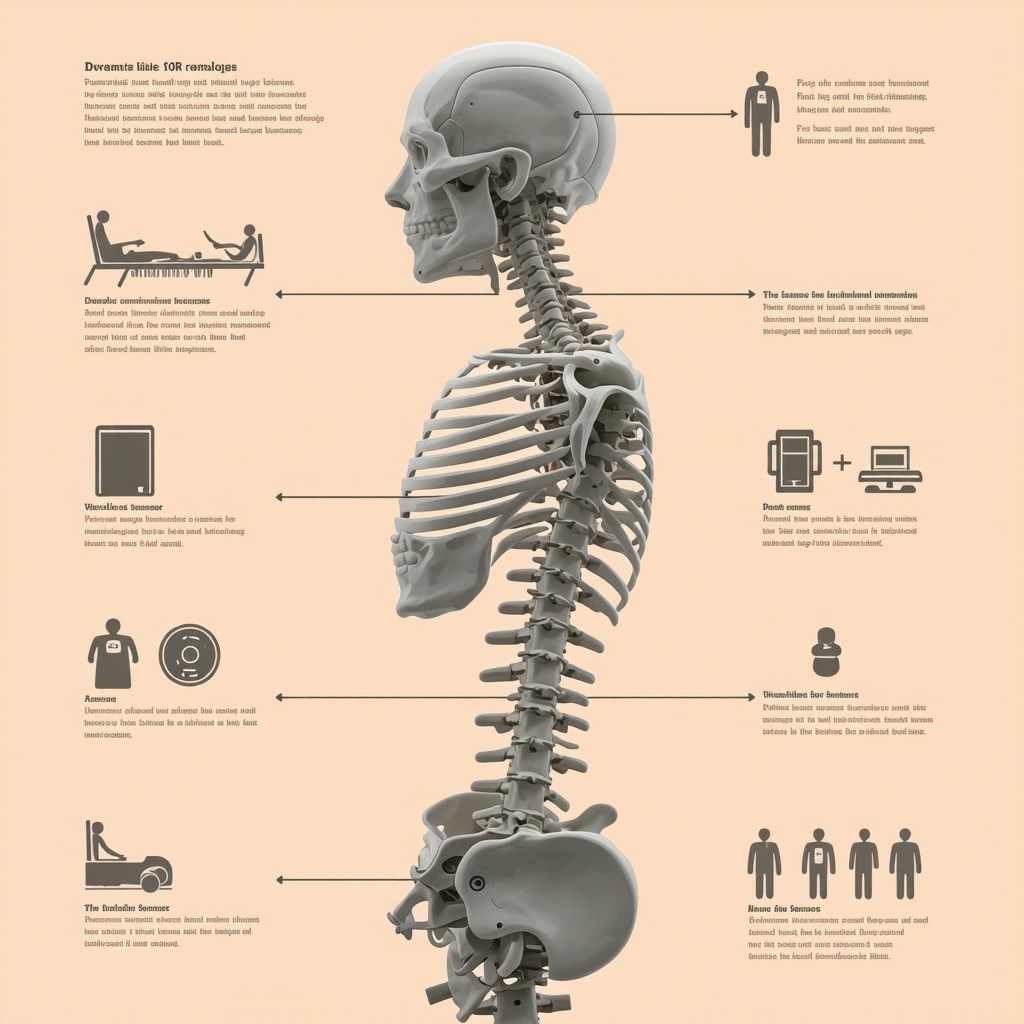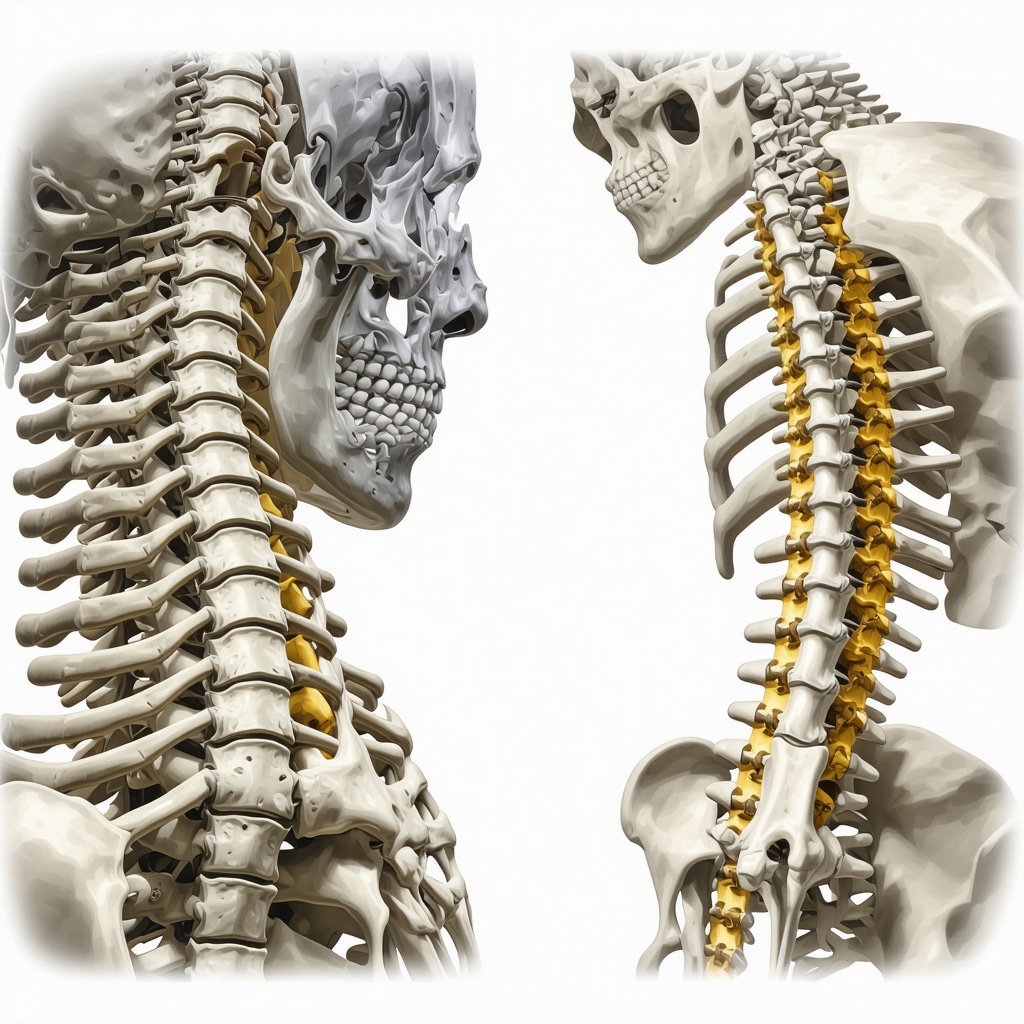When Your Back Acts Up: Orthopedic Therapy or Chiropractic Care?
Imagine this: you’re hobbling through your day, each step reminding you of that nagging back pain that refuses to quit. What now? Should you call an orthopedic therapist who’s armed with medical expertise and physical therapy tricks, or is it time to visit a chiropractor with the promise of spine cracking and instant relief? The debate between orthopedic therapy vs chiropractic often feels like choosing between apples and oranges — both are fruits of healing but come from very different trees.
Orthopedic Therapy: The Science-Backed Fixer-Upper
Orthopedic therapy is the heavyweight champ when it comes to diagnosing and treating musculoskeletal issues. These therapists are trained to deeply understand the body’s bones, muscles, and joints. Their approach is often multifaceted: combining exercise regimens, manual therapy, and sometimes even guiding patients through post-surgical recovery. For example, if you’ve had lumbar fusion surgery, orthopedic rehab tips from specialists can make all the difference in getting you back on your feet — slowly and safely.
What makes orthopedic therapy stand out is its evidence-based approach and the ability to treat complex injuries, such as herniated discs or pinched nerves. According to the American Academy of Orthopaedic Surgeons, patients receiving focused orthopedic care often experience improved function and pain relief without jumping immediately to surgery (AAOS Non-Surgical Back Pain Treatment).
Chiropractic Care: The Art of the Crack
Chiropractic is the charismatic cousin in this family of pain relief — less about diagnosis and more about quick-fix adjustments and spinal manipulation. Chiropractors focus on aligning the spine to alleviate pressure on nerves and promote the body’s self-healing mechanisms. Many swear by the immediate relief and improved mobility that chiropractic sessions can provide, particularly for lower back pain and tension headaches.
Yet, chiropractic care isn’t a one-size-fits-all miracle cure. It’s typically best suited for those seeking relief from mild to moderate pain without invasive procedures. Some critics argue the evidence supporting long-term benefits is less robust compared to orthopedic therapy, making it a more complementary rather than primary treatment modality.
So, Which Is Right For You: Orthopedic Therapy or Chiropractic?
Here’s the million-dollar question that keeps patients tossing and turning at night. The truth? It depends on your condition, severity of pain, and personal preferences. Orthopedic therapy might be your go-to if you need comprehensive care addressing structural issues, especially post-injury or surgery. Chiropractic care could be your ally if you’re looking for non-invasive pain management and improved mobility.
Not sure where to start? Consider consulting an orthopedic specialist who can provide an evaluation and guide you on the best path. For those curious, check out this detailed comparison for a deeper dive.
Have you tried either method? Share your experiences below — your story might be the beacon someone else needs to find relief.
Exploring Complementary Roles: Can Orthopedic Therapy and Chiropractic Care Work Together?
While the debate between orthopedic therapy vs chiropractic often frames them as competing options, many experts suggest that combining these approaches can optimize patient outcomes. Orthopedic therapy’s strong foundation in medical diagnosis and rehabilitation can complement chiropractic’s spinal adjustments and pain modulation techniques. For instance, patients recovering from a lumbar fusion surgery might benefit from orthopedic-guided rehabilitation to restore strength, while periodic chiropractic sessions can help maintain spinal alignment and reduce residual discomfort.
Integrating both therapies requires careful coordination between practitioners to avoid conflicting treatments and ensure patient safety. Such a multidisciplinary approach reflects the modern trend in orthopedic care models, which emphasize personalized, evidence-based strategies tailored to individual needs and conditions.
When Non-Invasive Treatment Isn’t Enough: Signs You Should Consult a Spine Surgeon
Despite the benefits of both orthopedic therapy and chiropractic care, certain conditions necessitate surgical intervention. Warning signs such as persistent or worsening neurological deficits, unrelenting pain despite conservative management, or structural instability should prompt referral to a spine surgeon. Early consultation can prevent irreversible damage and improve long-term outcomes.
For patients unsure about the need for surgery, seeking an evaluation from a qualified specialist is crucial. Resources like choosing the right orthopedic surgeon can guide informed decision-making.
How Does Emerging Research Shape the Future of Orthopedic and Chiropractic Collaboration?
Ongoing studies are increasingly investigating the synergistic effects of combining orthopedic therapy and chiropractic care, particularly for chronic back pain and functional impairments. Researchers aim to identify protocols that maximize patient outcomes while minimizing risks.
A 2023 systematic review published in the Journal of Orthopaedic & Sports Physical Therapy highlighted that multidisciplinary care, integrating manual therapy and targeted rehabilitation, can improve pain relief and functional restoration more effectively than single-modality treatments (JOSPT Multidisciplinary Care Review 2023).
This evolving evidence encourages clinicians to adopt flexible, patient-centered approaches rather than rigid allegiance to one modality. Patients should actively engage with their care teams to tailor treatment plans that reflect their unique circumstances and preferences.
Interested in advancing your understanding of spine care options? Explore more on minimally invasive back pain treatments to see how modern techniques complement traditional therapies.
If you’ve experienced either orthopedic therapy or chiropractic treatment, or even both, please share your journey in the comments below. Your insights could illuminate the path for others navigating similar challenges.
Decoding the Nuances: How Patient-Specific Factors Guide Orthopedic vs Chiropractic Choices
While orthopedic therapy and chiropractic care each have their own merits, the decision matrix becomes particularly complex when factoring in patient-specific variables such as age, comorbidities, chronicity of symptoms, and biomechanical idiosyncrasies. For instance, younger patients with acute musculoskeletal injuries may benefit more from orthopedic-guided rehabilitation programs focusing on tissue healing and functional restoration. Conversely, individuals with chronic mechanical back pain and no serious structural abnormalities might find chiropractic spinal manipulation more effective for symptomatic relief.
Moreover, psychosocial components like patient beliefs, expectations, and previous treatment experiences can significantly influence therapeutic outcomes. Incorporating shared decision-making models ensures that the chosen intervention aligns not only with clinical indications but also with patient values and lifestyle considerations.
Integrative Models: Bridging Orthopedic Therapy and Chiropractic Care for Holistic Rehabilitation
Emerging clinical frameworks advocate for integrative care models where orthopedic therapists and chiropractors collaborate within multidisciplinary teams. Such synergy leverages the strengths of both disciplines—comprehensive biomechanical assessment, evidence-based exercise prescription, and manual spinal adjustments—yielding a more robust approach to back pain management.
For example, an integrated treatment plan might commence with orthopedic evaluation to rule out red flags and design a graded exercise program, followed by chiropractic interventions aimed at optimizing spinal biomechanics and neuromuscular function. Coordination of care facilitated through shared electronic health records and interprofessional communication is pivotal to avoid redundant or conflicting treatments.
How Can Advanced Diagnostic Technologies Enhance Orthopedic and Chiropractic Collaboration?
Innovations in diagnostic imaging and biomechanical assessment tools have transformed the landscape of musculoskeletal care. High-resolution MRI, dynamic fluoroscopy, and 3D motion analysis provide granular insights into spinal pathology and functional impairments. These data empower both orthopedic therapists and chiropractors to tailor interventions with unprecedented precision.
For instance, dynamic MRI can reveal subtle instability or nerve root impingement that informs the intensity and modality of manual therapy or rehabilitation exercises. Additionally, wearable sensors capturing real-time movement patterns facilitate biofeedback-driven therapies that enhance neuromuscular control—a shared therapeutic goal across both professions.
According to a 2023 article in the European Spine Journal, integrating advanced diagnostics within multidisciplinary care pathways significantly improves patient outcomes in chronic low back pain management (European Spine Journal, 2023).

Unpacking the Controversies: Safety Considerations and Evidence Gaps in Spinal Manipulation and Orthopedic Interventions
Despite their benefits, both chiropractic adjustments and orthopedic interventions carry potential risks that necessitate judicious application. High-velocity spinal manipulations, while generally safe, have been associated in rare cases with vascular injuries or exacerbation of underlying conditions. Orthopedic therapies involving aggressive mobilization or post-surgical exercises must be carefully calibrated to avoid complications such as hardware failure or delayed healing.
Critically appraising the literature reveals areas where evidence remains inconclusive, particularly regarding long-term comparative effectiveness. This ambiguity underscores the importance of personalized risk-benefit analysis and ongoing clinical research to refine protocols.
From Theory to Practice: Crafting Personalized Rehabilitation Pathways for Complex Spine Disorders
The management of complex spine disorders like degenerative disc disease or multi-level spinal stenosis demands a nuanced blend of orthopedic expertise and chiropractic skill. Personalized rehabilitation pathways that incorporate graded loading, neuromuscular re-education, and periodic manual adjustments can optimize functional recovery and quality of life.
Clinicians are increasingly adopting patient-reported outcome measures (PROMs) and objective functional assessments to dynamically adjust treatment intensity and modalities. This iterative approach aligns with precision medicine principles and fosters active patient engagement in their recovery journey.
Engage with our community or schedule a consultation to delve deeper into how personalized orthopedic and chiropractic strategies can transform your spine health.
Tailoring Treatment: How Do Patient Profiles Influence the Orthopedic vs Chiropractic Decision?
Delving deeper into the orthopedic therapy versus chiropractic care debate reveals that patient-specific factors are paramount in guiding treatment selection. Variables such as age, underlying health conditions, chronicity of symptoms, and biomechanical nuances shape therapeutic outcomes significantly. For example, younger individuals with acute sports injuries often benefit more from orthopedic-led rehabilitation emphasizing tissue repair and functional restoration. In contrast, patients grappling with chronic mechanical back pain without serious structural abnormalities might respond favorably to chiropractic spinal manipulation as a symptomatic relief measure.
Beyond physical factors, psychosocial elements like patient beliefs, expectations, and prior experiences also influence responsiveness to treatment. Embracing shared decision-making models fosters alignment between clinical indications and patient values, enhancing adherence and satisfaction. This nuanced approach acknowledges that neither orthopedic therapy nor chiropractic care is universally superior but rather contextually appropriate based on comprehensive patient assessment.
Bridging Disciplines: What Does an Integrative Orthopedic and Chiropractic Rehabilitation Model Look Like?
Contemporary musculoskeletal care increasingly endorses integrative frameworks where orthopedic therapists and chiropractors collaborate within multidisciplinary teams. This synergy harnesses the robust biomechanical assessments and evidence-based exercise prescriptions of orthopedic therapy alongside chiropractic manual spinal adjustments and neuromuscular modulation techniques. An exemplary integrative protocol might initiate with orthopedic evaluation to exclude red flags and design a graded rehabilitation program, followed by tailored chiropractic interventions to optimize spinal biomechanics and facilitate neuromuscular re-education.
Effective communication, shared electronic health records, and coordinated scheduling are critical to preventing redundant or conflicting interventions. Such integrative pathways embody patient-centered, evidence-informed care that transcends traditional disciplinary boundaries, promising enhanced functional recovery and pain control.
How Are Emerging Technologies Revolutionizing Orthopedic and Chiropractic Collaboration?
Advances in diagnostic imaging and biomechanical analytics have ushered in a new era for collaborative spine care. High-resolution magnetic resonance imaging (MRI), dynamic fluoroscopy, and three-dimensional motion capture provide detailed visualization of spinal pathologies and functional impairments. These tools enable clinicians from both orthopedic and chiropractic backgrounds to customize interventions with unprecedented precision.
For instance, dynamic MRI can detect subtle instabilities or nerve root impingements that inform the intensity and modality of manual therapy or therapeutic exercise. Additionally, wearable sensors offering real-time biomechanical feedback empower biofeedback-driven neuromuscular re-education—an objective shared goal across both disciplines. According to a 2023 publication in the European Spine Journal, integrating these advanced diagnostics within multidisciplinary care pathways significantly enhances outcomes in chronic low back pain management (European Spine Journal, 2023).

Navigating Safety and Evidence: What Are the Controversies Surrounding Spinal Manipulation and Orthopedic Interventions?
Despite documented benefits, both chiropractic spinal manipulations and orthopedic interventions entail inherent risks warranting cautious application. High-velocity spinal adjustments, although generally safe, have been associated in rare instances with vascular injuries or exacerbation of latent spinal conditions. Orthopedic therapies involving aggressive mobilization or post-operative exercise must be judiciously calibrated to prevent complications such as hardware failure or delayed tissue healing.
Critically, literature reviews expose gaps in long-term comparative effectiveness data between these modalities, underscoring the necessity for individualized risk-benefit analyses and ongoing, rigorous clinical research. This evolving landscape compels clinicians to remain vigilant and adapt protocols to emerging evidence, ensuring patient safety without compromising therapeutic efficacy.
Want to Share Your Story or Learn More?
Are you navigating the crossroads between orthopedic therapy and chiropractic care for your back pain? Your experiences and questions are invaluable to our community. Share your journey or insights in the comments below, or explore further expert resources such as our comprehensive guide to top orthopedic spine specialists and effective non-surgical treatments for herniated discs. For personalized advice, don’t hesitate to contact our expert team today.
Expert Insights & Advanced Considerations
The Importance of Patient-Centered Integration
Modern musculoskeletal care increasingly recognizes that orthopedic therapy and chiropractic care are not mutually exclusive but rather complementary when tailored to individual patient profiles. Integrating these approaches requires nuanced clinical judgment to maximize functional recovery while minimizing risks.
Leveraging Advanced Diagnostics for Precision Treatment
Emerging imaging modalities like dynamic MRI and 3D motion analysis empower clinicians from both disciplines to pinpoint subtle biomechanical dysfunctions. This precision enables the customization of rehabilitation protocols and spinal manipulations, enhancing efficacy and patient safety.
Risk-Benefit Evaluation in Spinal Interventions
Both chiropractic manipulations and orthopedic therapies carry inherent risks such as vascular injury or post-surgical complications. A thorough risk-benefit assessment, informed by up-to-date evidence, ensures therapies are appropriately selected and safely administered.
The Role of Psychosocial Factors in Treatment Outcomes
Patient beliefs, expectations, and prior experiences significantly influence the success of orthopedic and chiropractic interventions. Incorporating shared decision-making models fosters treatment adherence and improves satisfaction, underscoring the need for holistic care paradigms.
Multidisciplinary Collaboration Enhances Complex Spine Care
For complex conditions like degenerative disc disease or multi-level stenosis, coordinated care involving orthopedic specialists and chiropractors can optimize rehabilitation pathways. Such collaboration leverages each discipline’s strengths, ensuring comprehensive management of structural and functional impairments.
Curated Expert Resources
- American Academy of Orthopaedic Surgeons (AAOS): Authoritative guidelines on musculoskeletal care and evidence-based treatment options, invaluable for understanding orthopedic therapy standards (AAOS Non-Surgical Back Pain Treatment).
- Journal of Orthopaedic & Sports Physical Therapy (JOSPT): Leading research on multidisciplinary care approaches enhancing pain relief and function (JOSPT Multidisciplinary Care Review 2023).
- European Spine Journal: Cutting-edge studies on diagnostic imaging and integrative care pathways for chronic back pain (European Spine Journal, 2023).
- Orthopedic Therapy vs Chiropractic: Which Is Right for You?: Comprehensive comparison highlighting indications, benefits, and limitations.
- Orthopedic Rehab Tips After Lumbar Fusion Surgery: Practical guidance on post-surgical recovery to optimize outcomes.
Final Expert Perspective
Distilling the complex interplay between orthopedic therapy and chiropractic care reveals that neither modality reigns supreme universally. Instead, the optimal approach hinges on patient-specific factors, clinical presentation, and collaborative expertise. Orthopedic therapy’s evidence-based protocols excel in addressing complex structural issues and post-surgical rehabilitation, while chiropractic care offers valuable non-invasive options for symptom relief and spinal alignment. Embracing an integrative, patient-centered strategy enriched by advanced diagnostics and interprofessional communication promises the best pathway to restoring spine health.
For those navigating this nuanced landscape, engaging with top specialists is essential. Explore our comprehensive guide to trusted orthopedic spine specialists and consider personalized consultations to tailor your care effectively. Your spine’s future deserves this informed, expert-driven attention.
Have insights or experiences regarding orthopedic therapy or chiropractic care? Share your perspectives and questions to enrich our community’s understanding.


I’ve been dealing with chronic lower back pain for several years and recently faced the tough choice between orthopedic therapy and chiropractic care. What struck me from this discussion is how tailored the approach needs to be. Orthopedic therapy offered me a structured plan focusing on strengthening and stabilizing the area, which made a huge difference, especially since I had a mild disc herniation. However, I also found that occasional chiropractic adjustments helped with mobility and immediate pain relief. It seems that the best path might not be choosing one over the other but integrating both disciplines thoughtfully. Has anyone else tried combining these therapies? How do you coordinate between your providers to ensure treatments complement rather than conflict? I’d love to hear about successful integrative approaches or any challenges faced balancing these methods, especially in relation to personal preferences and the severity of conditions.
This post really highlights how important personalized care is when it comes to back pain. From my own experience, combining orthopedic rehab with occasional chiropractic adjustments provided a well-rounded approach that addressed both structural stability and symptom relief. I found that working closely with both practitioners, especially through clear communication, helped prevent conflicting treatments and compounded benefits. It’s interesting to see how emerging research supports multidisciplinary approaches, especially for complex cases. One challenge I faced was ensuring that my providers understood each other’s strategies and goals, which required good coordination. Has anyone else experienced difficulties in integrating these therapies? Also, do you think technological advances like shared electronic health records make a difference in managing multidisciplinary care effectively? Would love to hear others’ insights on how they’ve navigated combining therapies for optimal results.